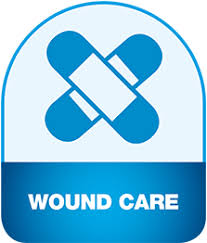
Debarati Shome
Leibniz Institute for Plasma Science & Technology
Title: The effect of cold atmospheric pressure plasma (CAP) on cell migratory behaviors and molecular markers of wound healing machinery
Biography
Biography: Debarati Shome
Abstract
Introduction: Cold atmospheric pressure plasma (CAP) is a promising tool for biomedical and clinical application. Cold physical plasma are partially ionized gases that mediate biological response generating ROS and RNS species.1-3In this study, we used the medical device class 2a kINPen MED®; it is clinically approved atmospheric argon plasma jet. Typical active agents being generated include ions, electrons, and reactive oxygen and nitrogen species (ROS/RNS). Electric and magnetic fields, light (visible, in-frared, UV), and neutral particles are being generated 4. It is well known, that wound oxygenation is an
important factor of wound healing and scavenging reactive species could impair wound healing In this study, we examined the extent of wound healing and the underlying cellular mechanism in vitro induced by CAP. Our group had also collected wound exudates before and after CAP treatment from 7 ambulant diabetic patients with chronic wounds from ‘Competence Center Diabetes’ in Karlsburg. These wound exudates were also analyzed.
Methods: For our studies, we incorporated dermal keratinocytes, fibroblasts and co culture. An indirect treatment where
CAP treated media (RPMI) was added and a direct CAP treatment on the cells (different time points) were performed and
the migration assay was monitored. Matrix metalloproteinase play a pivotal role in wound re epithelization. The amount of
metalloproteinase and several cytokines (especially Interleukins) in the patient exudates were also monitored by ELISA.
Results and future direction: Short-term CAP treatment induces enhanced cell migration than longer treatment and
compared to untreated control. Co culture studies show an improved cell migration upon CAP treatment compared to
keratinocytes alone. Matrix metalloproteinases and Interleukins were also reduced in wound exudates after CAP treatment
which indicates improved wound healing. It was also evident with an average of more than 80 % reduction in the wound size
of the patients undergoing CAP treatment. Also, the signaling machinery of wound healing involving inflammatory (mediated
by interleukins) and regenerative pathways (mediated by HIPPO signaling) are currently being checked by quantative PCR and
western blot to identify an autocrine/paracrine signaling pathway induced by CAP.

